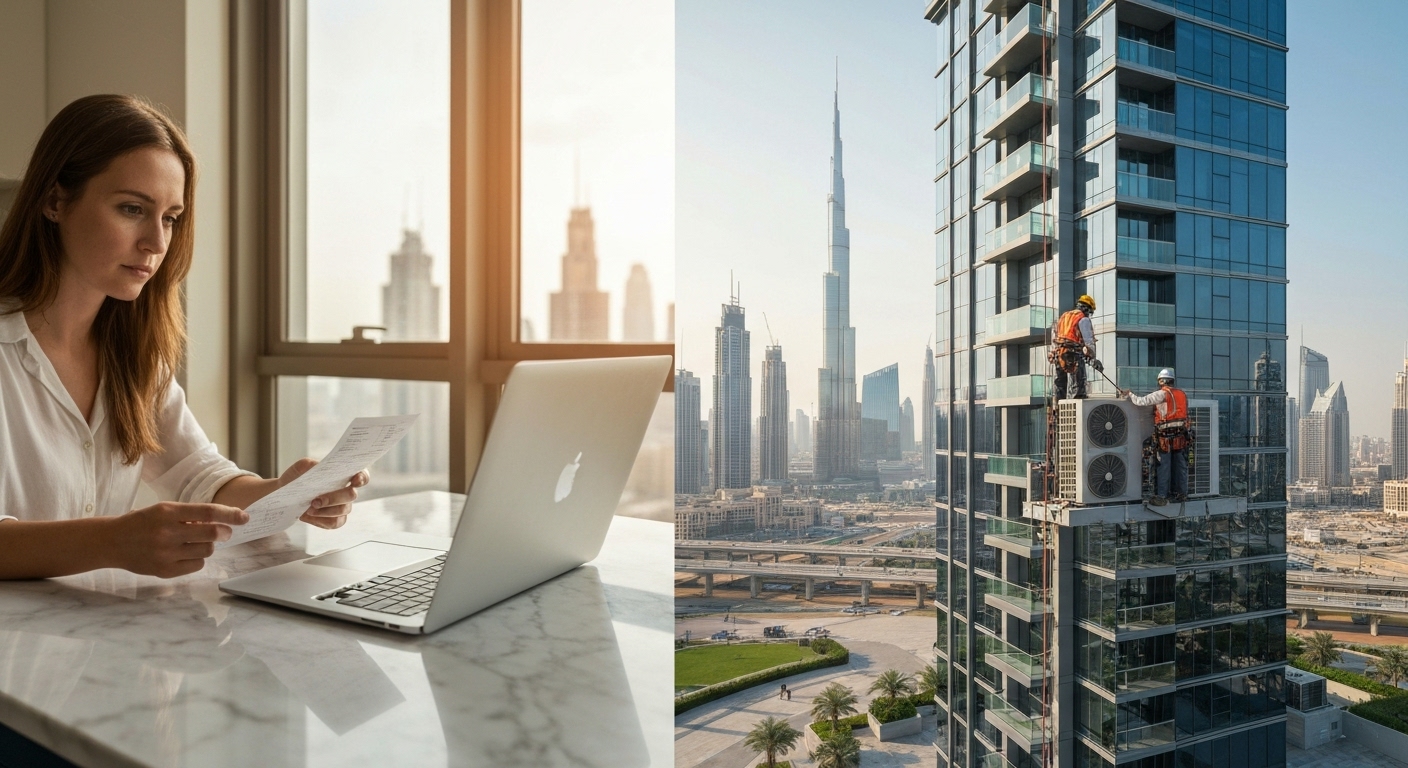Are there any hidden maintenance costs in new Dubai buildings? For prospective property buyers or homeowners, understanding the full financial commitment is essential. This article provides a clear overview of often-overlooked costs unique to Dubai’s property market, helping you make more informed decisions and avoid surprise expenses.
Understanding the Basics: What are Service Charges in Dubai?
Service charges are a recurring fee property owners must pay to cover the upkeep of communal areas and building facilities. In Dubai, these charges typically range from AED 12–25 per square foot annually and cover services such as security, cleaning, landscaping, and building management. For instance, a 1,000 square foot apartment may incur an annual service charge of AED 12,000–25,000, depending on its location, facilities, and the property’s age.
These charges are regulated by the Dubai Land Department (DLD) and must be paid regardless of whether the property is occupied or rented out. Service charges are usually disclosed during the buying process, but buyers should check whether the billed amount covers only basic services or also includes premium amenities, periodic upgrades, or energy-efficient systems. Municipal fees, often set at 5% of annual rent, are collected monthly via DEWA utility bills—another recurring cost that homeowners must account for.
Beyond the Obvious: Uncovering Truly ‘Hidden’ Maintenance Costs in New Developments
While service charges are well-publicized, several less obvious costs can catch new owners by surprise. Hidden maintenance expenses often arise within the first year after moving in. For example, the need for annual maintenance contracts, unexpected handyman call-outs, and emergency repairs—particularly for DIY-furnished units—can easily add up to AED 8,000 or more in the initial 12 months.
These include:
- Repairs of minor defects such as cracks, leaks, or faulty wiring that may not be covered by the developer’s standard warranty.
- Appliance and system maintenance—air conditioning, water heaters, or electrical fittings often require servicing more often in new buildings due to settling or construction issues.
- Turnkey packages, sometimes offered by premium developers, might include after-sales maintenance support that can help reduce these initial outlays. In contrast, buyers who opt for furnishing and fit-outs independently may find total first-year costs—furnishings plus maintenance—can approach AED 53,000 for a typical apartment setup.
Some costs are imposed by building management or the homeowners’ association. These may appear as special levies, unforeseen assessments for major repairs, or mandatory contributions to a sinking fund earmarked for future capital works.
New vs. Older Buildings: How Maintenance Costs Differ
New buildings in Dubai can sometimes mask initial flaws due to rapid handover schedules. Issues such as poor finishing, minor water leakage, or misaligned fittings may only become apparent after you have moved in. With older buildings, the cost structure shifts towards ongoing wear and tear—requiring more frequent replacement of core systems but often benefiting from stable service charge rates. Buyers should weigh these differences carefully, as initial “warranty periods” might offer some protection, but routine expenses often increase after this grace period ends.
Budgeting for the Unexpected: Contingency Funds and Sinking Funds
Apart from routine charges, Dubai property owners are often required to contribute to a sinking fund. This reserve is designed to meet longer-term needs such as elevator replacement, structural repairs, or façade upgrades. Sinking fund contributions are typically embedded within annual service charges but may also be assessed as one-off payments if major work is required. Buyers should review the homeowners association documentation to clarify how these funds are calculated and utilized.
Navigating Developer Contracts and Disclosures: What to Look For
Careful scrutiny of developer contracts and property handover documentation is crucial. Buyers should:
- Request a detailed breakdown of service charges, including any provisional sums for utilities, security, or amenities.
- Ask whether after-sales maintenance support is included and how long it lasts.
- Review building management rules to spot potential special assessments or new levies.
Transparent developers, such as Danube Properties, often provide clear, upfront disclosure regarding all recurring and potential maintenance costs, helping buyers budget more accurately.
How Danube Properties Ensures Transparency in Maintenance Costs
Danube Properties is committed to transparent disclosures and supporting homeowners with comprehensive maintenance information before purchase. Their turnkey packages often include after-sales support for the first year, reducing the burden of hidden expenses and offering buyers greater peace of mind.
Tips for Minimizing and Managing Maintenance Expenses in Dubai
- Compare service charge rates across similar buildings and neighbourhoods.
- Choose properties with a reputation for quality construction to reduce early repair needs.
- Factor in utilities, municipal fees, and periodic maintenance contracts when budgeting.
- Maintain a contingency reserve for the first year to cover non-routine repairs or assessments.
In conclusion, while headline service charges are well-publicized, there are indeed hidden maintenance costs in new Dubai buildings, including first-year repairs, special levies, and ongoing municipal fees. By understanding these nuances and selecting transparent developers, buyers can manage and minimize these extra expenses. Contact Danube Properties to learn more about transparent maintenance cost solutions.




